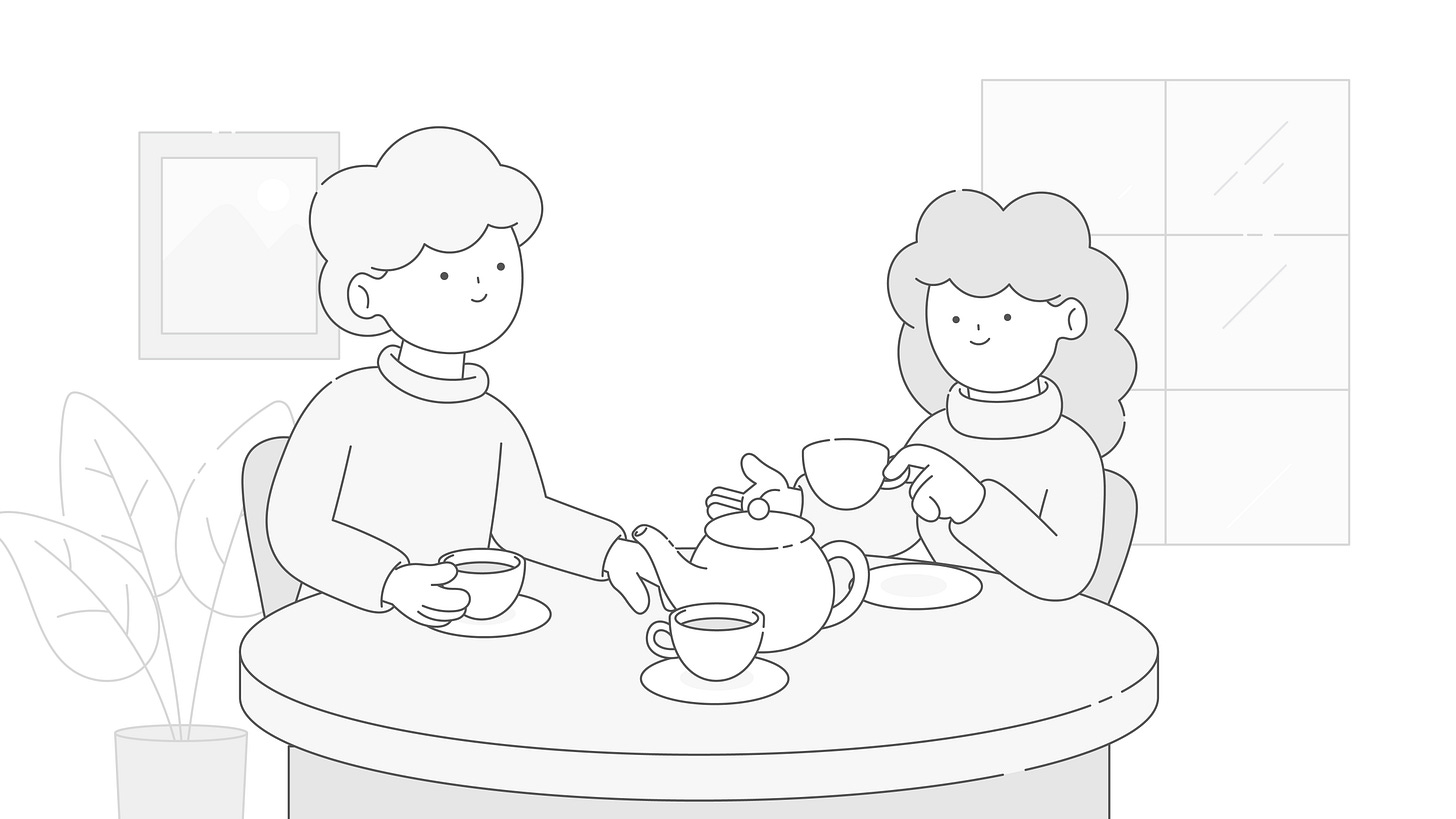What Your World’s Objects Say (Without Saying a Word)
A Technique to Make World-Building More Meaningful
You’re building a scene in the private quarters of your captain of the guard. He’s having tea with the woman he’s wooing, and they’re both seated at the table, with a tea set between them.
If you want your world to feel tangible and alive, you can’t just put any tea set there.
Your every prop is an opportunity to convey story.
Every item—every tool, trinket, weapon, charm, coin, or cup—should whisper something about the people who made or carry it.
That’s the difference between set dressing and storytelling.
Objects Are Cultural Footprints
An ornate teacup might tell you someone values ceremony.
An old-fashioned teacup? That they’ve held onto a dying tradition that’s probably running in their family.
A broken teacup carefully repaired with gold? That they believe beauty comes from surviving pain.
Same object.
Three different cultures.
Three different souls.
This is how you embed your world into the reader’s senses—without a single exposition dump.
Another Quick Example
Let’s say your hero is a war-worn soldier from the highlands.
You could say that about him outright.
Or you could show us the necklace he wears, made from a worn leather cord with a sliver of shale and a child’s tooth.
Suddenly, we know:
He’s sentimental—the shale likely represents a memory of his highlands home.
He either has a child or has lost one—depending on the meaning of the tooth.
His culture turns feelings into talismans.
No explanation needed. Just stuff. Meaningful stuff.
Why This Works
✅ Adds emotional depth through physical detail
✅ Gives you a shortcut to culture, belief, and backstory
✅ Helps your reader feel the world instead of reading about it
✅ Makes your characters feel like they live in that world—not just move through it
Bonus: these are also great anchors for scene beats and character choices.
A Little Prompt to Try
Pick one character—major or minor.
Then ask:
What’s one object they carry or wear every day?
What story does it tell?
What emotion is hidden in it that they wouldn’t put into words?
Now write a short paragraph that shows them interacting with this object, and let it speak for itself.
If this post got your gears turning, hit the ❤️ and share it with your favorite detail-loving world-builder.
Because sometimes, a single chipped bowl can tell the whole story.
See you next week,
Tal Kilim




I've been thinking about a character I have that carries a flask but never thought to describe more of the flask to reveal more about him. Thanks, this is a great idea to flesh out a character!